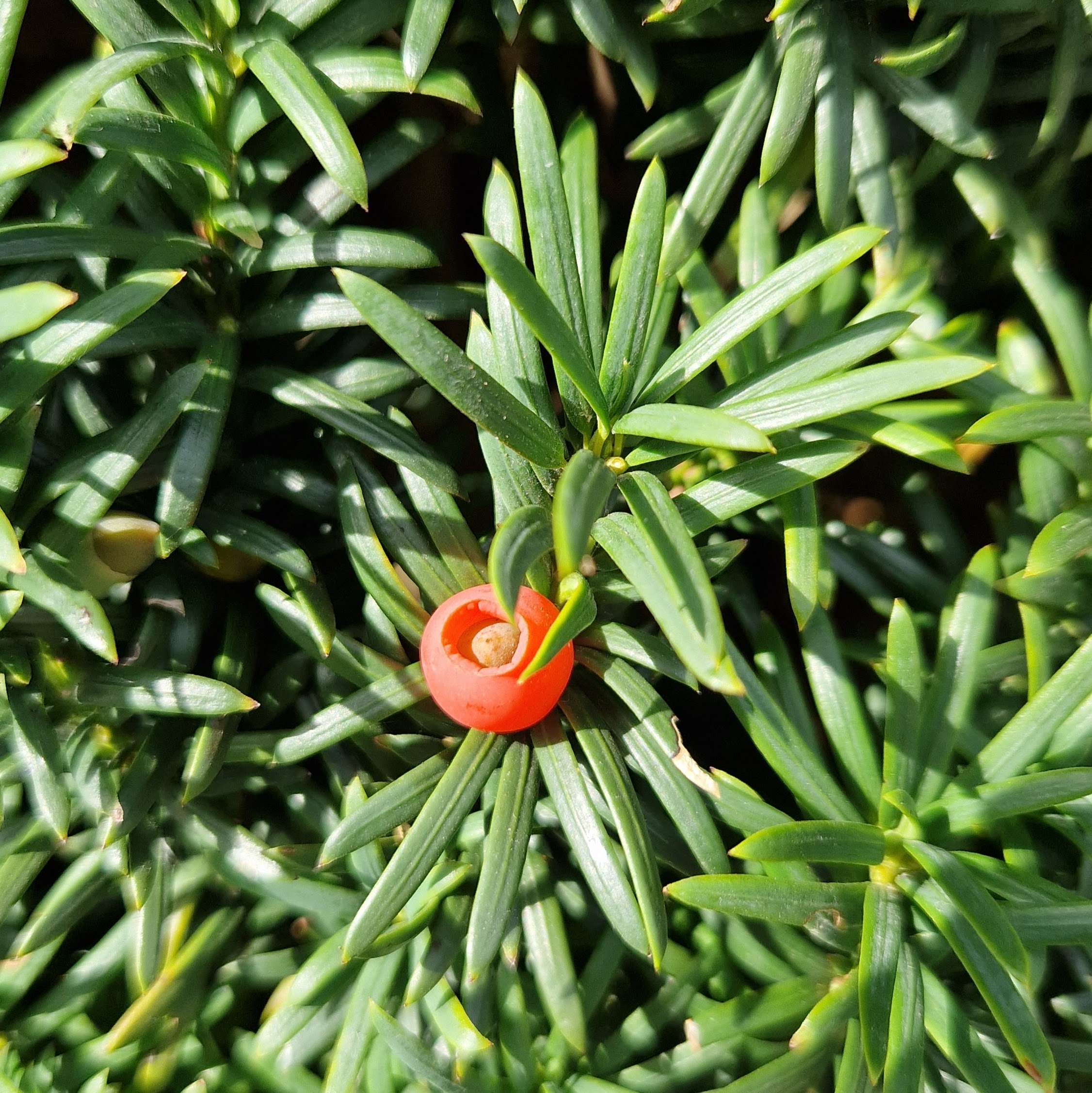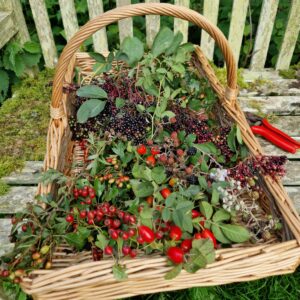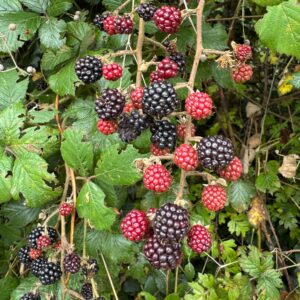GUIDE TO POISONOUS BERRIES
When foraging for wild berries it is extremely important to remember that not all berries are safe to eat. While many wild fruits are delicious and nourishing, some are highly toxic and can cause serious illness, or worse, if consumed.
Learning to identify poisonous berries is an essential part of safe foraging, helping you avoid risks and giving you confidence when gathering wild food. As always, the most important rule of foraging is that you should NEVER eat any berry or wild food if you are not one hundred percent certain that you have correctly identified it, and that it is safe to eat.
Below, you’ll find a guide to some of the trees and plants in Ireland that produce berries which should never be eaten.
YEW
Taxus baccata

Yew or Taxus baccata, is one of the most poisonous native plants in Ireland. While there are two chemotherapy drugs, docetaxel and paclitaxel, that were developed using the needles and the bark of the yew tree, it should never be consumed as it can be fatal to both humans and livestock.
While the flesh of the berry is actually edible, the seed and the needle-like leaves are highly toxic. Ingesting even a small amount can be fatal, so I would always advise on the side of caution and recommend that no part of the yew should ever be consumed. It is also advisable not to eat any fungi or other plants that grow in close proximity to a yew tree.
WOODY NIGHTSHADE
Solanum dulcamara

Woody nightshade or Solanum dulcamara, is also known as bittersweet. The berries taste both bitter and sweet and could look very attractive to young children. While it is not quite as lethal as its relative, deadly nightshade, all parts of the plant are poisonous, particularly the berries, and they can be fatal if eaten by children.
Nightshades are in the Solanum family, which also includes potatoes, tomatoes, bell peppers and aubergines, all of whose leaves are also poisonous.
LORDS AND LADIES
Arum maculatum

Lords-and-Ladies or Arum maculatum is also highly poisonous and can be fatal if ingested. The sap of the plant can cause burn like skin damage and even just touching the leaves can cause a serious skin irritation.
The variety in the photo grows in my garden and has variegated leaves, but the leaves are most usually a plain green. The shape of the leaf is quite similar to sorrel, and a participant on one of my recent foraging walks told me that she had mistakenly eaten some. However she immediately realised that something was wrong by the sensation that it caused in her mouth and she spat it out, but it took a while for the irritation in her mouth and lips to subside.
HOLLY
Ilex aquifolium

While Holly, or Ilex aquifolium is not as lethal as the previous species, the berries are poisonous, and if consumed they can cause vomiting, diarrhea, dehydration and drowsiness.
HONEYSUCKLE
Lonicera periclymenum

Honeysuckle, also known as Wild Woodbine, has beautifully scented flowers that are edible. However the berries are poisonous, with symptoms of ingestion including stomach pain, nausea, vomiting, and diarrhea. Symptoms are more severe in children, so it is important to seek medical advice if you suspect your child has consumed honeysuckle berries.
SPINDLE
Euonymus europaeus

The berries of the Spindle tree, Euonymus europaeus are a food source for many birds and wildlife, but they are highly toxic to humans.
While the striking pink fruit with orange seeds is beautiful to look at, both the berries and seeds are poisonous and can cause severe stomach problems.
IVY
Hedera helix

The dark purplish-black berries of ivy are an important food source for many bird species. However they are toxic to humans and can cause nausea, vomiting, and breathing difficulties.
COTONEASTER
Cotoneaster species

There are many species of Cotoneaster, a common garden shrub and a valuable plant for wildlife. The flowers attract bees, butterflies and moths, and the berries are an important food source for many species of birds.
However the novice forager could confuse the berries with hawthorn, and they are poisonous if ingested in large quantities, causing nausea, vomiting, and abdominal discomfort.
VIBURNUM
Viburnum tinus

For someone who is very new to foraging, the berries of viburnum, also known as Laurustinus, could be mistaken for elderberries. While they are not lethal, they are mildly toxic and could cause stomach upsets.
CONCLUSION
It is not my intention to scare you away from foraging, but it is important to remember that many plants have very powerful properties, that are both useful and harmful. As stated above, I cannot stress how important it is that you should NEVER eat any berry or wild food if you are not one hundred percent sure that you have correctly identified it, and that it is safe to eat.
If you are new to foraging the best place to start would be to go on a foraging walk with an experienced foraging guide in your local area. You can find links to my own foraging walks and workshops below.
If you live further away, you might like to start with my Wild Herb Foraging Online Workshop, which is packed with useful advice on safe foraging, and information on how to harvest and prepare wild plants and berries for both culinary and medicinal use.
IMPORTANT WARNING
This information is for educational purposes only and is not intended to replace the advice of a qualified nutritionist or health practitioner.
Never use any wild plant if you are pregnant, have a serious illness or medical condition or are on any medication, without first consulting your medical team.
It is the responsibility of the reader to ensure that any wild plants are 100% correctly identified. If in doubt never use any wild plant for food or medicine.
LEARN MORE
If you would like to learn more about safe and sustainable foraging, and using wild herbs for food and medicine, click on the links below to check out my in person and online workshops.






